Operating Manual for Spaceship Earth, By Buckminster Fuller –– A book review
Buckminster Fuller famously popularized the geodesic dome. This book presents his synergistic view of the Earth as a spaceship.
I found this copy of Spaceship Earth in my local bookshop. It had clearly been waiting for me, since I've known of it since 2012. Upon spotting it, I snatched it in-hand and lilted haphazardly to the cash till, demanding service.
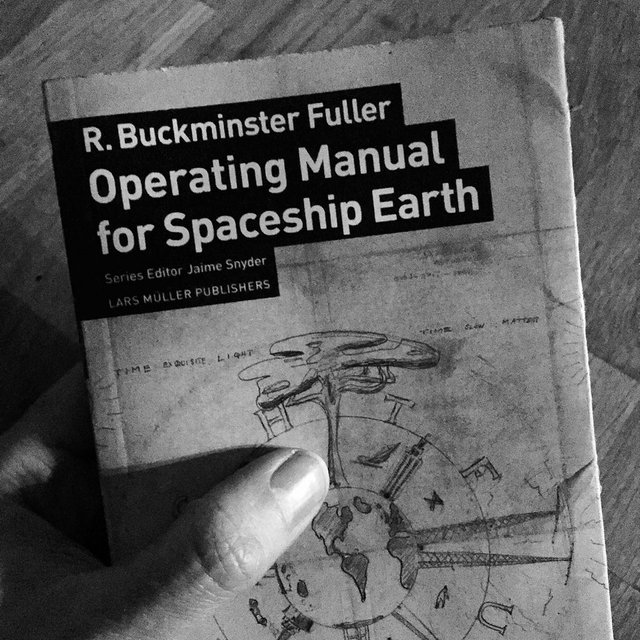
A renowned architect1, engineer and philosopher, Fuller attempts, in this book, to describe engineering solutions to the world's tailspin into ecological catastrophe. Written way back in 1969, Operating Manual for Spaceship Earth is particularly relevant today, now that everybody agrees that the political classes have imploded.
I found myself excited by Fuller's re-telling of colonialist history as a series of heists pulled off by 'Great Sea Pirates' who installed puppet governments at home to give the illusion of legitimacy to their plundering of foreign lands and treasures. Fuller argues, sparkling with mischief, that the reason why the world's governments are unable to fix our problems today is because they never were able to.
In short, Fuller explains: Government was an illusion. A theatre-production set up by the Great Sea Pirates.
Arguably, in some regions (Denmark, for example) I can see how this theatre production managed to metamorphose itself into something genuinely resembling a societally useful enterprise. But, I had to agree with Fuller, that elsewhere it does appear as though he is right: The government is a fraud.
And what remedy does Fuller propose?
He suggests that we should do as we have always done as a species: Engineer ourselves out of the problem, ignoring the bizarre pantomime of the political arena.
He then describes how the Great Sea Pirates encouraged all the talented people in the land to 'specialize' in a particular skill. Leaving them unable to put together enough of the puzzle to unseat the Pirates. Fuller suggest that schools were designed to capture intelligence and use it for the Machiavellian ends of the Pirates. A problem he thinks persists to this day:
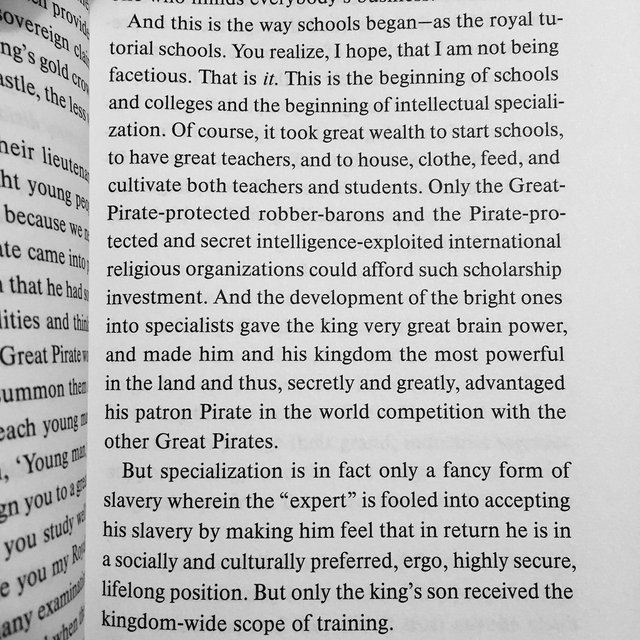
At this point in Fuller's book, I became more and more excited. It seemed I was being let in on a big secret. It seemed that Fuller was tearing down the primary illusion of modern civilization: That somehow the 'leaders' did it. Whereas, it was actually the engineers.
Fuller laments the fact that the Earth's richest people are burning up planetary resources in a bonfire of short-term gain. Fuller uses the spaceship metaphor to suggest we are quickly burning through the millennia of fuel in our planetary tank. Our actions will, to future generations (if they survive to consider it) look absurd:
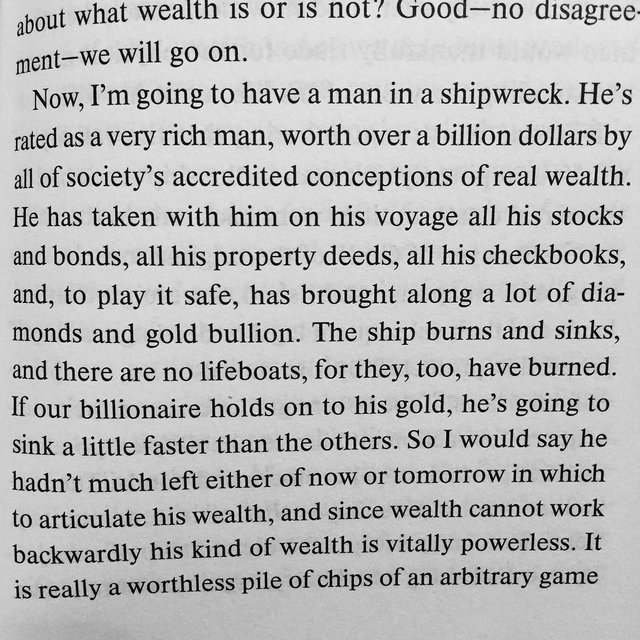
I got more and more excited, but then Fuller started to get extremely technical about half-way through the book. The momentum of his initial argument got dragged down into a math lesson that I feared will lose most readers (it did me). After fifty or so thrilling pages about pirates, suddenly Fuller presented me with this:
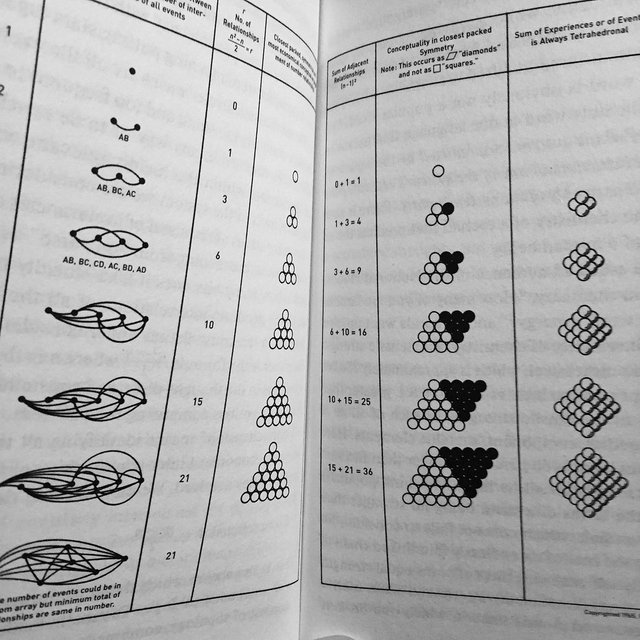
I'm sure these diagrams will make sense to a significant subset of readers, but I lost all enthusiasm to understand at this point. Perhaps I could have grasped the meaning, but I felt Fuller had stopped caring if I did.
Then the real shock came. Fuller concludes his book in what, at first, I thought must be satire. But sadly, as I read on, I could only view as being clean reality.
Having spent his entire book telling me that we are burning through vital Spaceship Earth resources at a rate that is unsustainable, Fuller seems to boast about how many plane flights he manages to take each year:

Oh dear, Bucky.
I guess it was 1969 though.
That said, a lot of the book is great, and perhaps someone with a background in elementary physics would get more out of the sections I felt I drowned in. If you feel like a new perspective on your home, our planet, consider getting a copy from your local library –– unless the politicians have shut down your local library.
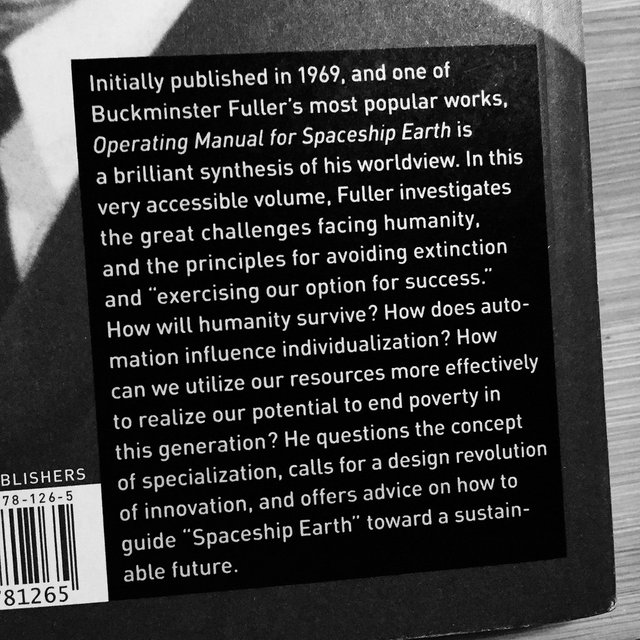
Footnotes
The sphere packing illustrations are exercises in geometry, which is the basis for understanding all of Fuller's work. He learned the old school way which integrated an understanding of the Quadrivium as a basis to make connections among seemingly disparate subjects. The Quadrivium is math, the number of itself, geometry, the number in space, music, the number in time, and astronomy, the number in space and time. This, coupled with an understanding of the use of tension and how it can be used to compliment compression in structures, allowed him to revolutionize design science in ways most still do not understand. He was the equivalent of Einstein in structural engineering, except he was a true polymath and was not stuck in one subject.
Thanks for reading @lifeworship. And thanks for the insight.
Do you know of a more accessible place I could begin to understand what Fuller's diagrams mean? I felt overwhelmed by that aspect of this book. I'm interested in structures, geometry and engineering; I just don't have any technical background in the field.
Thanks :)
I started a comment and it grew out of all proportion, so I turned it into a post so other people could see. I hope this is appropriate.
https://steemit.com/writing/@lifeworship/response-to-operating-manual-for-spaceship-earth-by-buckminster-fuller-a-book-review
I really enjoy sharing Bucky's work with others. Thank you.
Wonderful! Thanks, I have read it and I'm going to get hold of a copy of 'Nine Chains to the Moon'.
Let me know if you like it.